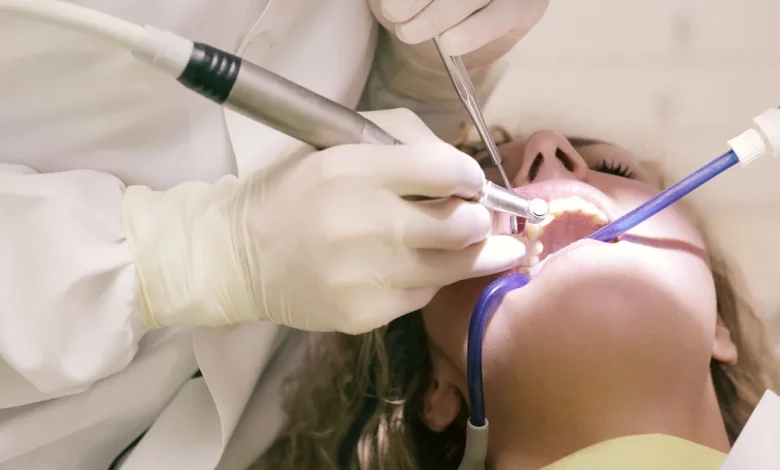Straighten Up: 4 Solutions for Treatment of Slanted Teeth

When you make a goal for yourself, it’s always important to know how to track your progress so you can notice improvement. However, it can be hard to notice changes when your goal is improving your smile and dental health.
This is especially true if you have slanted teeth which can make it harder for orthodontics to be successful. Here is how to tell if orthodontics is the best option for you and how to straighten teeth at home when you make that decision.
How Does a Single Tooth Become Crooked or Misaligned?
A single tooth can become crooked or misaligned due to various factors. Here are some of the common reasons:
Genetics
Your genetic makeup plays a pivotal role in determining the size and structure of your jaw and the arrangement and size of your teeth. Genetic factors influence the way your jawbone develops and the available space for teeth to emerge.
If your parents or close relatives have experienced crooked teeth or other orthodontic issues, you may be genetically predisposed to develop similar dental problems. These inherited characteristics can set the stage for tooth misalignment over time.
Crowding
Crowded teeth occur when there isn’t sufficient room within the jaw for all teeth to grow in their intended positions. As adult teeth emerge, they might encounter limited space due to factors such as a small jaw or extra teeth.
The lack of space can cause teeth to push against one another, gradually displacing them. Over time, this pressure can lead to teeth becoming crooked or overlapping, impacting your smile’s appearance and functionality.
Dental Habits
Habits involving teeth for tasks other than chewing can impact their alignment. Actions like biting nails, using teeth as tools to open packages, or clenching and grinding teeth (bruxism) can subject teeth to undue pressure. This pressure can gradually cause teeth to shift, leading to misalignment over time.
Bruxism, in particular, can be detrimental as the constant grinding wears down enamel and stresses the teeth, potentially altering their alignment.
Missing Teeth
When a tooth is lost due to decay, injury, or extraction and is not promptly replaced, neighboring teeth may drift into the space. This phenomenon occurs because teeth seek to maintain balance and fill the gaps left by missing teeth. As adjacent teeth move, the alignment of the remaining teeth can be compromised, leading to crookedness or misalignment.
Solutions for Treatment of Slanted Teeth
Treating slanted teeth, also known as malocclusion, is important for aesthetic reasons and oral health. Here are four common solutions for treating slanted teeth:
1. Orthodontic Treatment
Orthodontic treatment, including options like traditional braces or the popular Invisalign vs braces dilemma, is a comprehensive approach to correcting slanted teeth and misaligned bites. Orthodontists use methods like traditional braces with brackets and wires or clear aligners like Invisalign to gradually move teeth into their ideal positions.
Braces apply controlled pressure to shift teeth over time, while Invisalign offers a more discreet alternative using a series of custom-made, removable trays. The treatment duration can range from several months to a few years, depending on the complexity of the case.
2. Dental Veneers
Dental veneers are thin porcelain or composite resin shells that are custom-made to fit over the front surface of teeth. They are a versatile cosmetic option for correcting slanted teeth that may have minor misalignments. Veneers are especially useful for individuals who want a quicker solution than traditional orthodontic treatment.
The process involves minimal tooth preparation, removing a thin layer of enamel to accommodate the veneer. The veneer is then bonded to the tooth, effectively masking the slant and creating a more even appearance. Veneers provide a natural-looking result and can also address other cosmetic issues like tooth discoloration or chips.
3. Tooth Contouring and Reshaping
Tooth contouring, or dental reshaping, is a minimally invasive procedure used to correct minor imperfections in the shape of teeth, including slanting. In cases where the slanting is slight, a dentist can carefully remove small amounts of enamel from the affected tooth to reshape it. This process helps to achieve a more balanced appearance by adjusting the contours of the tooth.
Tooth contouring is usually painless and doesn’t require anesthesia. However, it’s important to note that this procedure is suitable for mild cases only and won’t address more significant misalignments.
4. Dental Crowns
Dental crowns are a way to fix crooked teeth when the misalignment is more noticeable or when the tooth’s structure isn’t in good shape. A crown is a cap that looks like a tooth and goes over the full visible part of a tooth. It can be made of different things, like metal, porcelain, or clay.
Before putting a cap on a tooth, some of the outer structure has to be taken off. The crown is made to fit and look the way you want it to, giving you a strong and useful answer. Dental caps not only make the tooth look better, but they also make it stronger and more stable.
How to Choose the Best Option for Straightening a Crooked Tooth?
When figuring out the best way to fix a crooked tooth, it’s important to look at the options from various angles. First, it’s important to have a complete oral exam with your doctor to determine why your teeth are crooked. To better understand the problem, an X-ray should be part of an oral review.
Next, the problem should be examined to see if braces, veneers, or surgery to remove the tooth is needed. The choice should be made based on the person’s unique situation and how bad the crookedness is.
When choosing which choice to go with, it’s also important to consider how much it will cost. Making a decision that fits your wants and is based on good information is important.
Lastly, consider how you like things to look. Ultimately, it’s important to pick the right choice to make you feel good and give you confidence that things will work out.
Conquer Slanted Teeth with Graceful Alignment
The orthodontic solutions available for slanted teeth introduce choices and treatment options to align teeth and ensure better oral health. Straightening teeth improve oral function and appearance, boosting confidence and comfort in social situations.
If you need treatment for slanted teeth, research all your options and schedule a dentist appointment to guide you to the best solution for your needs.
Was this article helpful to you? If so, make sure to check out our blog for more useful information and resources.




